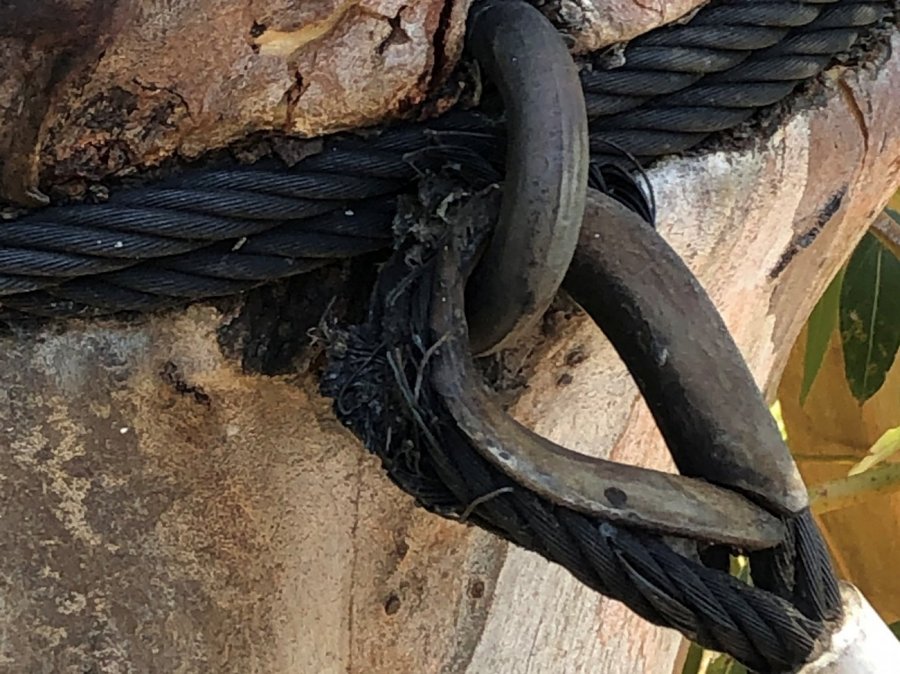Flying foxes terminating in trees have special inspection requirements.
Living entities change more quickly over time compared to steel structures or hardwood posts. Australian Standard 2316 part 7 (Inspection and Maintenance) has this to say on the subject of ziplines in trees.
A tree assessment certificate must be drawn up for ropes courses that are situated in trees. The inaugral inspection shall be carried out by an arboricultural expert.
And,
Periodical inspection of ropes courses installed on trees shall be carried out at least once every year by an inspection body with experience and knowledge on ropes courses and trees and woods.
It goes on to say such checks should include the effects of weather, evidence of rotting or corrosion and any change in the level and safety of the equipment. Have a look at the following picture. It's a close up of the banner image above.
Wanna go for a ride?

While the tree grows the zipline is strangling the tree. At the same time acids in tree sap are destroying the cable. It's a lose-lose situation. But wait, there's more.
The anchor is locked through from the other side preventing it from accommodating the growth. It's slowly being enveloped and has pushed the cable loops against the hard eye. Components are now rubbing where previously they would have been free to move.
Friction and a corrosive environment have caused more than 10% of wire strands to break. Something this bad should be instantly condemned. Regular inspections would never let it go this far.
What else can we learn from the standard?
Requirements for Aborist Report
Annex A provides the minimum information to be included in an arboreal assessment report. It includes such things as,
- Recommendations regarding management of the site
- Diameter of tree at a height of 1.3m (monitors rate of growth)
- Description of defects and abnormalities
- Recommendations for site operator to correct such defects
- Whether there are misgivings about further use of the facility
- Information on necessary re-inspection
The report is to be made by a competent person defined as an AQF Level 5 qualified Arborist.
Frequency of Reporting
As stated above the minimum is once every 12 months. However, it can be more. From Queensland WorkSafe comes the following recommendation,
Zip lines should receive a comprehensive inspection after high winds (specified by the engineer) or other severe weather events, especially where one or more of the end anchorages is on a tree.
It makes sense. An engineer calculates all loads on the zipline including those imposed by high winds. The need for re-inspection after extreme weather will be specified by the engineer in the Operational Documents provided after construction.